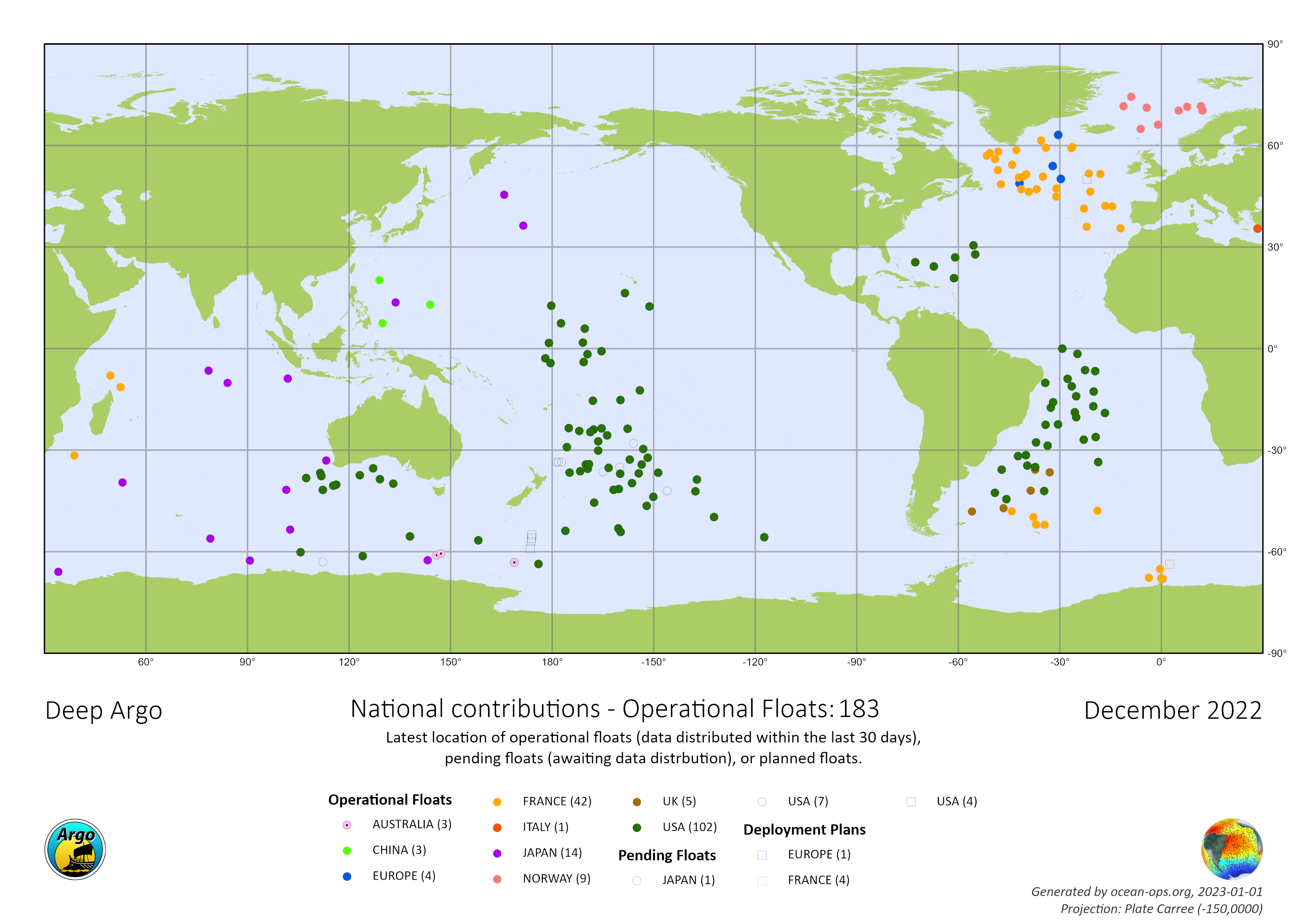With a new generation of floats that can reach the bottom of the sea, scientists could soon close the global ocean’s heat budget. With more than 4,000 Argo floats patrolling the globe, we are getting a clearer-than-ever picture of the state of our seas. Until recently though, these floats could not descend below 2,000 meters. As a result, they’ve managed to monitor only the top half of our oceans.
Today, a new generation of floats named Deep Argo can delve where no other autonomous ocean observation infrastructures have been on a global scale: the abyss. As they descend to 6,000 meters and then ascend, the Deep Argo floats sample ground-breaking data with a focus on climate change.
CRITICAL CLIMATE DATA
“Ninety percent of the excess heat produced by human activity is stored in the oceans, and we estimate that 10–15% of this heat is stored below 2,000 meters,” explains Virginie Thierry, a physical oceanographer for Argo France, one of Euro-Argo’s 12 members. With Deep Argo floats, researchers will be able to accurately measure the global ocean’s average temperature and its variations. They will also have the opportunity to study which regions or which ocean layers are more impacted by global warming.

Deep Argo float at the IFREMER facility. (Image credit: Olivier Dugornay/IFREMER)
Furthermore, when the oceans get warmer, their volume increases, inducing a sea level rise. “It is vital that we quantify the role of the deep sea in sea level rise,” Virginie Thierry says. Deep Argo floats will also be invaluable assets for ocean modeling. Ocean models are computer simulations of the oceans’ properties and their circulation. They are essential to study our oceans and their influence on our global climate. According to Damien Desbruyères, another physical oceanographer collaborating with Euro-Argo, “these floats will bring a new source of data and help evaluate, thus improve our current models and how they represent deep ocean currents in particular.”
ARGO ECOSYSTEM
When they ascend above 2,000 meters depth, the Deep Argo floats offer the same functionalities as traditional Argo floats, also called Core Argo, making Deep Argo a natural extension of the Argo program. Scientists like Damien Desbruyères, Virginie Thierry, and their European and international peers are working together to extend the Core Argo floats with their Deep Argo counterparts. They have their work cut out for them, though. Pressure at a 4,000 meters depth is 400 times higher than at the surface. Plus, signals of climate change at these depths consist of extremely small temperature variations: about 1/1000 of a degree Celsius. “We need to better understand and evaluate how the floats’ sensors react to high pressure in order to get the best quality of data possible,” Virginie Thierry says.

Map of national contributions of Deep Argo operational floats as of December 2022. (Image credit: OceanOps)
By 2030, the Deep Argo researchers and engineers’ community hope to maintain 1,200 Deep Argo floats up and running around the globe. That would represent one-fourth of the whole Argo floats tally. This is one of the priorities of OneArgo, a program endorsed by the United Nations Decade of Ocean Sciences. Its goal is to upgrade the Argo array into a truly global network that could study the polar and marginal seas, include biogeochemical measurements as well as, in the case of Deep Argo, explore the full ocean depth.
For more information, visit: https://www.mercator-ocean.eu/en/.
This feature appeared in Environment, Coastal & Offshore (ECO) Magazine's 2023 Spring edition Sustainable Ocean Exploration, to read more access the magazine here.





